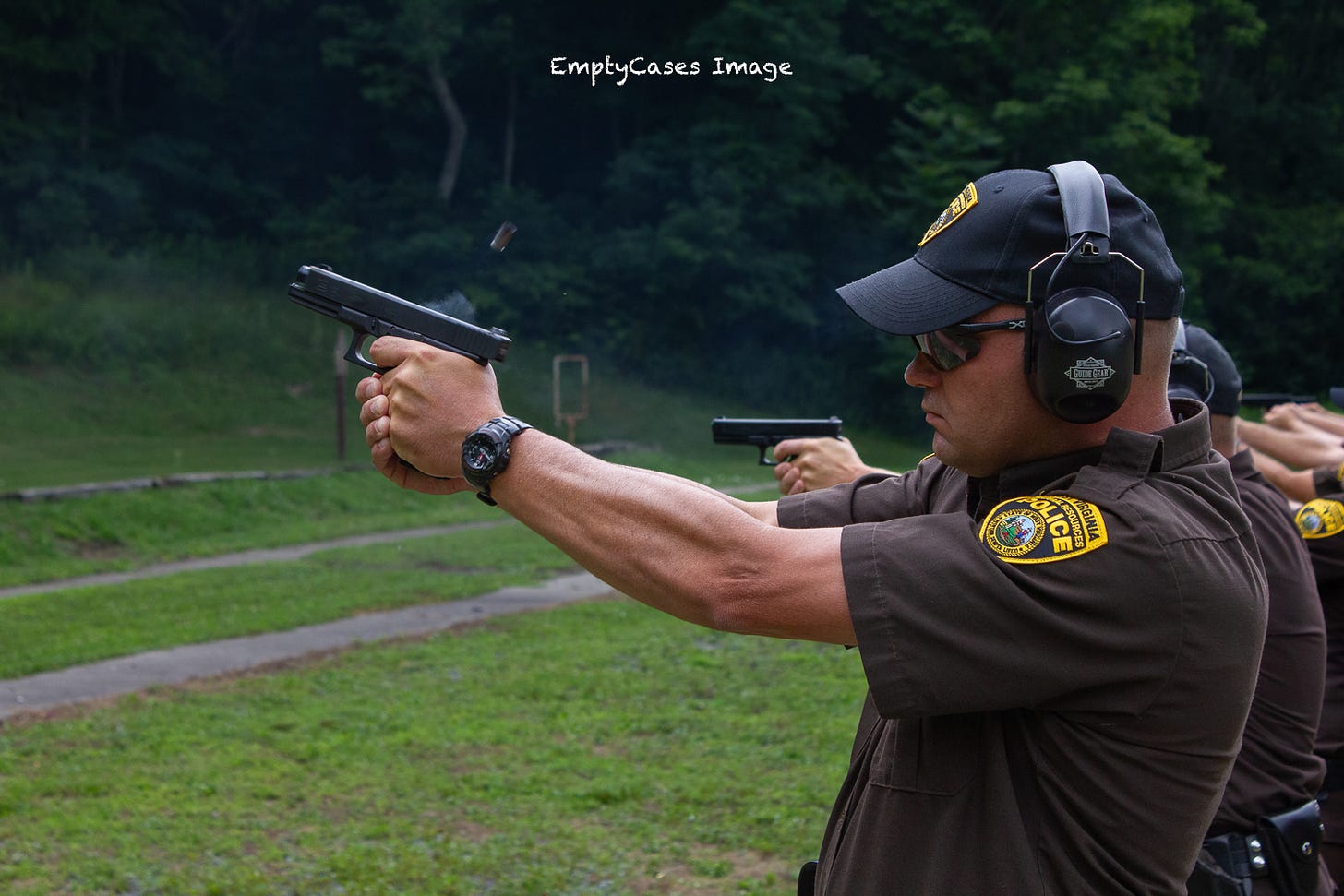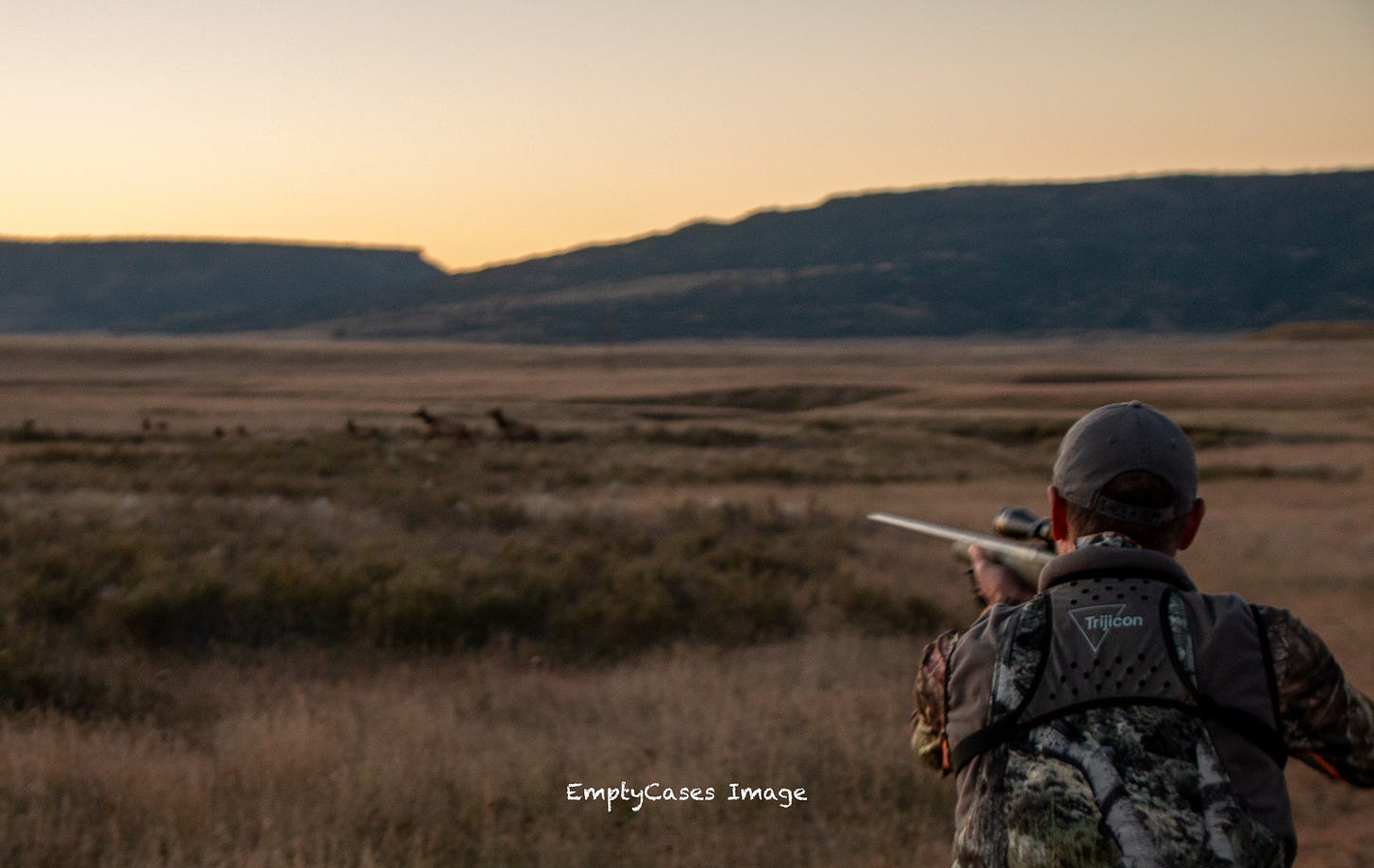If we looked at the things we do in our everyday lives with the same casual consideration we often apply to shooting, we wouldn’t be very happy humans. Just consider the ramifications of wrecking your car 20% of the time you drove it, or maybe falling, 20% of the time you went up a flight of stairs. Less dangerously, what if you missed your mouth 20% of the time you attempted to take a bite, painfully shoving a fork into your face? OK, granted, 20% might be a high threshold for doing stupid shit, but what if you failed to wipe your bottom end after a toilet trip, just 5% of the time?
I know these comparisons to shooting might seem ridiculous, because these are things we do every day, and that we are generally very good at doing. And, if any of us did these things, ineffectively, every 2 out of 10 or 1 out of 20 times we attempted them, at best we would be TikTok famous, and at worst our families would have us institutionalized. However, when it comes to shooting, most – even government institutions – consider a hit rate of 80%, acceptable. Conventional logic suggests that’s a reasonable performance standard when it comes to law enforcement handgun qualification.
I never understood how a law enforcement agency could allow a police officer to carry a gun if they missed the target 20% of the time. It’s like saying its acceptable for an officer to hit the target 80% of the time, but he can shoot 20% of his shots in the direction of the range master. It’s totally understandable how a police officer might miss his target during a gunfight, after all, there’s someone shooting back at him. But how does it make any sense to consider a cop qualified if they can only hit a target with 8 out of every 10 shots fired? Is it acceptable that 20% of his shots might hit people and other things they shouldn’t?

I get it, shooting accurately is not easy. I’ve done enough shooting to know that. But I also know that the easiest way to miss is to take shots you don’t have a 100% chance of making. Granted, if you must shoot in a self-defense situation, you’re going to be scared shitless or at least moderately stressed. Shots taken while hunting are similar. You probably will not be scared unless you’re shooting at dangerous game, but you should at least be experiencing an adrenalin rush and some anxiety. Otherwise, you’re probably not justified in taking the shot because it does not mean anything to you.
If you can only hit your target 80% of the time when you’re on a range and under no stress, what does that hit percentage translate to when your sights are on a big whitetail buck or a murderous fiend? If you miss the murderer he might kill you, but your errant shot might also hit an innocent bystander. Neither would be a good thing. If you miss the deer, he might run off, and that’s OK, but what if you wound the buck? You might find him, or you might not, but either way the deer will suffer needlessly.
For all these reasons I reevaluated the firearms practice I do and what I consider acceptable performance. I routinely test myself with self-defense or hunting drills that I feel will replicate potential real world situations. My goal is to always perform at 100%. I never always perform at 100%, but what this teaches me are the shots I can make most of the time. Yes, sometimes even on easy shots I’ll jerk the trigger and miss or hit poorly, usually because I am trying to go too fast. The trick is to recognize the reason for the miss and work to prevent it in the future.
This is one of the reasons I struggle with the current trend of taking extreme long range shots at big game animals. With every shot you take you should ask yourself, given ideal conditions what is the chance I make this shot? If the answer is not 100% you should not take it. Sometimes the consequences can be disastrous and a former gunwriter could tell you all about that.
Recoil anticipation is one of the main reasons we often miss when we shoot. It does not have to be a case where we are afraid of hard recoil, it’s just human nature to jerkishly react to loud noises, large fireballs, and a smack on our shoulder. I discussed recoil in the Centerfire Cartridges post last week, and Tim Sundles at Buffalo Bore ammunition e-mailed me and said – and I’m paraphrasing – part of the problem is that people do not shoot enough to circumvent the negative effects of recoil. Tim’s right of course, but he also said, “You are making way too much out of an unnecessary issue that can be overcome with proper training and practice.”
Tim shoots a lot. Tim is also very knowledgeable when it comes to hunting, shooting, and guns. However, I completely disagree with his last statement because I don’t think you can make “way too much out of” the recoil issue. This is especially true since it is one of the main reasons we miss, and – like Tim says – it “can be overcome with proper training and practice.” The problem is most people are not going to get enough training or conduct enough practice to sort it out. And, anyway, what in the hell is, enough?
I cannot answer that.
I can tell you this. In Africa this year a young boy was hunting with his father using his brand new 243 Winchester rifle. He was struggling to hit anything. A wise professional hunter paired the boy up with another 243 Winchester that was outfitted with a suppressor and the young man became a killing machine. Why? Recoil and muzzle blast were reduced.
I can also tell you that I shoot a lot. I just finished the annual Field & Stream rifle test during which I fired 175, five-shot groups with centerfire rifles. If you’re mathematically challenged, that’s 875 shots. Granted, I fired most of those shots with a suppressor, because it’s easier on me, but also because it gives the rifle its best chance to perform. I mention all this because in the middle of that test I was separately evaluating a yet-to-be-released, lightweight rifle with a 20-inch barrel chambered in 284 Winchester. It does not have a threaded muzzle, and the first shot caught me off guard with about 23 foot-pounds of free recoil and a concussive muzzle blast. The next several shots were not my best work; it took me several to collect myself.

The clear advice is to do as Sundles suggests and shoot more, but that’s easier to say than do. Most do not have a range at home like Tim and I do, so they cannot just go outside and shoot anytime they want. Also, time is a precious commodity, and going to the range takes time. If I had to go to a range to shoot, I would have to drive 45 minutes, uphill and through town — and through snow in the winter — each way. And too, ammunition is expensive. If you don’t reload and you’re shooting a centerfire rifle, you’re looking at about a dollar a shot. If you do reload, it takes more of that valuable time.
However, what you can do that will not cost you a dime and that will also take up very little time, is dry fire. Five minutes of dry practice a day can greatly improve your shooting, or as a minimum, help you maintain the skills you have. Shooting a rimfire is another cost-friendly solution, but you’re back to dealing with that time at the range issue.
Another thing you can do is what I did a long time ago, and that’s to stop looking at misses as an acceptable outcome of shooting. As Jeff Cooper once observed, the purpose of shooting is hitting, and as I will add to that, anything other than a hit is a failure. Strive to achieve 100% hits, learn the situations where your chance of making a hit is 100%, and then work to replicate those situations when you’re hunting. If you can’t do that, hunt harder or better.
It’s a little different with a real world self-defense situation where a shot – no matter how difficult – is necessary to increase your chance of survival. But it’s also similar because tactical planning and decisions can help you avoid circumstances where you may need to shoot, take a shot you probably cannot make, or that might put a bullet somewhere it should not go.
This 100% performance standard is one of the reasons I so much like step back and walk back drills, where you start close to the target and move increasingly further away as you get your hits. You can do this with any type firearm, from any position, and at any distances you want. What it will teach you is the distances and positions where you are 100%, and it will also provide you a point of departure for further training.
Yeah, I know, when it comes to shooting there is not now, and there never will be, any shot at any distance that is always and forever 100%. Shooting – accurate shooting – is hard, because while we might not wreck our car or fail to wipe out behind all that often, we still so stupid shit. But that’s not an excuse to set or accept a standard that’s less than perfect.
For the month of July you can sign subscribe and get a 20% discount.











Your replication of shot opportunities not taken is very practical. When you make a shot while hunting it should not come as a surprise.
Humans are lazy creatures and rarely if ever deliver beyond expectations. The old man was wise.